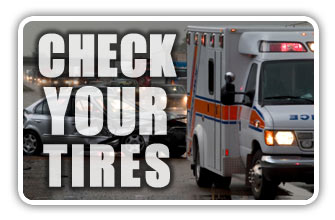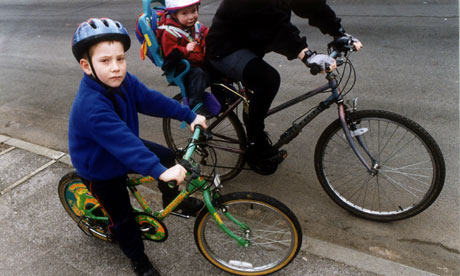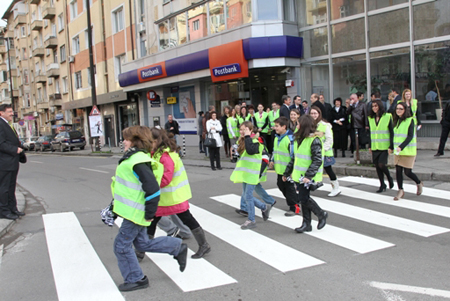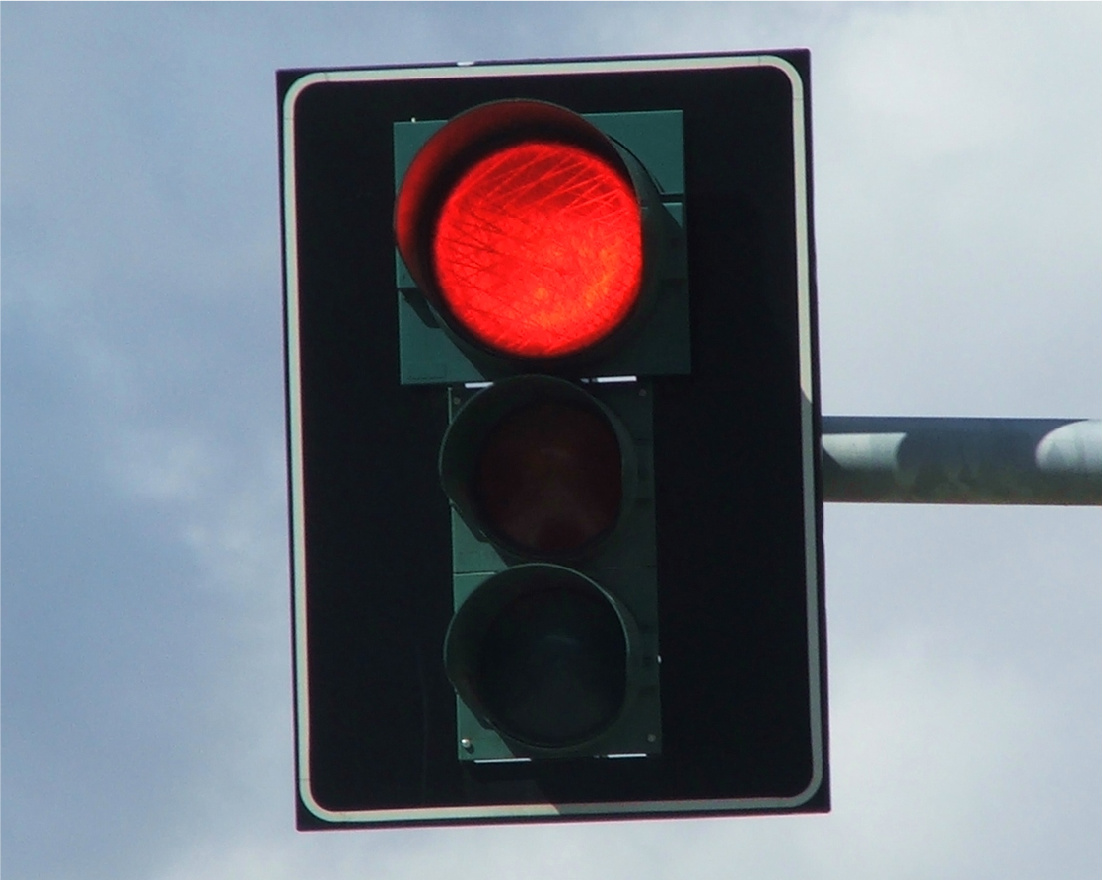Source:- Google.com.pk
Accident Prevention
Accidents can kill and maim. They affect all sectors of the economy, but the problem is particularly acute in small and medium-sized enterprises (SMEs)
As well as the cost in terms of lost lives and suffering to workers and their families, accidents affect business and society as a whole. Fewer accidents means less sick leave, which results in lower costs and less disruption to the production process. It also saves employers the expense of recruiting and training new staff, and can cut the cost of early retirement and insurance pay-outs.
Slips, trips and falls are the largest cause of accidents in all sectors from heavy manufacturing to office work. Other hazards include falling objects, thermal and chemical burns, fires and explosions, dangerous substances and stress. To prevent accidents occurring in the workplace, employers should establish a safety management system that incorporates risk assessment and monitoring procedures.
What do I have to do? Advice for employers
Carrying out a risk assessment
Significant hazards and risks
Slips, trips and falls
Construction — an accident black spot
Accident prevention checklist
Consultation, information and training
Employing workers who may be at increased risk
European legislation
How do I keep safe? Advice for employees
Hazards and risks employees face
European Legislation
Information and training
Read the key facts
Agency publications on accident prevention
Accidents are a major cause of death and disability. About 14,000 people die in the UK, most of them in England and more than 700,000 will be seriously injured in England alone. They cost the UK an estimated £150 billion every year. For children and young people, accidents are the greatest threat to life.
The prevention of childhood accidents is identified as one of the key indicators in the the 2013-2016 Public Health Outcomes Framework.
Three published guidance documents from the National Institute for Health and Care Excellence (NICE) outline recommendations for all those with a strategic role to play in injury prevention, including clinical commissioning groups (CCGs), local authorities and their partners.
Unlike safeguarding, there is currently no requirement for primary healthcare teams to undergo training in unintentional injury prevention. This is an important recommendation of the NICE guidance.
Concepts in accident prevention
Primary prevention: removal of circumstances causing injury - eg, traffic speed reduction, fitting stair gates for young children, reducing alcohol consumption.
Secondary prevention: reduces severity of injury should an accident occur - eg, use child safety car seats, bicycle helmets, smoke alarms.
Tertiary prevention: optimal treatment and rehabilitation following injuries - eg, effective first aid, appropriate hospital care.
Role of clinicians in accident prevention
Clinical roles for health professionals in accident prevention
These include:
Advice to patients: health workers are well placed to identify accident risks or medical conditions conferring risk and to advise accordingly - for example:
Child accident prevention:
Identify hazards (on home visits or if treatment sought for accidental injury).
Advise about prevention - eg, stair gates, keeping chemicals out of reach, etc.
Patients with medical conditions:
Identify and treat accident-causing conditions - eg, obstructive sleep apnoea, visual or balance disorders.
Give appropriate advice on fitness to drive.
Advise patients on how to minimise accident risks from their medical condition.
Identify unacceptable risks and intervene where appropriate - for example:
Identify vulnerable children and adults with recurrent injuries or at high risk. This includes those who are experiencing neglect and may require child protection procedures.
Consider reporting to the Driver and Vehicle Licensing Agency (DVLA) patients who fail to comply with medical driving regulations, if they are a serious risk to the public.
Accident surveillance: health professionals and their organisations can monitor injury rates and report preventable accidents; it has been suggested that A&E departments could play a key role.[10] NICE recommends establishing local protocols to alert health visitors, school nurses and GPs when a child or young person repeatedly needs treatment for unintentional injuries at an emergency department or minor injuries unit. On a national basis, NICE recommends ensuring that all hospital trusts are made aware of the data collection requirements for the universal and mandatory A&E (minimum) commissioning dataset.
Non-clinical interventions
These include:
Advocacy and policy making.
Collaboration with other agencies.
Promoting accident prevention education and training.
Research.
How effective are interventions by health professionals?
Research into child safety practices suggests that safety advice for families can be effective. Cochrane reviews found that:
Home safety education (usually given in a face-to-face setting), particularly with the provision of safety equipment, is effective in increasing safety practices.
Parenting interventions (usually home-based) may be effective in preventing childhood injury.
How well do health workers perform in the role of accident prevention?
Health professionals could improve their awareness and involvement in accident prevention. For example:
A 2003 survey of primary care organisation (PCO) board members, including GPs, found limited knowledge of and low prioritisation of accident prevention compared with other health promotion activities.
Health professionals are generally positive about their involvement in child accident prevention but legislative and engineering measures may need to be addressed in order to make their role more effective.
A study assessing the impact of child injury prevention training of midwives and health visitors suggested this had a positive effect on parental safety behaviours, the adoption of safety practices and injury reduction but that large-scale studies were required.
Accident prevention advice
This section is intended to outline the major causes of accidents in the UK and to give health professionals some knowledge of how these can be prevented. Advice tips can be found under headings 'Safety advice for carers of young children', 'Home accident prevention' and 'Road accident prevention advice', below.
Specific medical conditions
Doctors are well placed to advise patients on accident risks relevant to their medical problems. For example:
Sleep disorders:
These may be under-recognised and underdiagnosed.
Tools such as the Epworth Sleepiness Scale and expertise such as sleep disorder clinics are valuable.
Diabetes:
Hypoglycaemia is an important cause of driving mishaps in those with type I diabetes. It is a risk where hypoglycaemic agents are used. Drivers should take precautions such as checking their blood glucose before driving, taking meals and snacks and not ignoring symptoms of hypoglycaemia.
Research suggests that people with diabetes at highest risk are those with a history of mismanagement of hypoglycemia, lower limb neuropathy or greater exposure, ie high-volume driving.
Epilepsy:
People with poorly controlled epilepsy can be advised how to minimise their risks of injury during a seizure - eg, take a shower instead of a bath, do not iron when alone and other tips. Identified risk factors for injuries include the number of anti-epileptic drugs, history of generalised seizures and seizure frequency.
Attention deficit hyperactivity disorder:
ADHD has been shown to be associated with an increased risk of serious transport accidents. There is evidence that this risk is reduced by medication in male patients but not in females.
Accidents and children
Accidents are one of the main causes of death among children aged 1-5 years. About 100,000 children are admitted to hospital annually in the UK and 2 million attend emergency departments. In a typical CCG with a population of 100,000, this equates to approximately 3,300 emergency departments visits and 200 hospital admissions for child injuries.
For health workers, important points when advising on child accident prevention are:
Offer practical advice, not just general education - eg, advise about car seats or home safety equipment.
Use an evidence-based approach where possible and dispel myths - eg, some parents wrongly believe that cooker guards and baby walkers are safe.
Promoting safety does not require overprotection ('wrapping children in cotton wool') - this would delay development and increase the risk of obesity.
Promote sensible precautions in line with the child's level of development.
Safety advice for carers of young children
The NHS choices website provides clear guidance on preventing accidents in young children. Key points covered are prevention of the following injuries:
Falls
Use stair gates until the child is aged 2; teach older children how to climb stairs but supervise them (even 4-year-olds may need some help).
If the gaps between banisters or balcony railings are more than 6.5 cm (2.5 in) wide, cover them with boards or safety netting.
Change your baby's nappy on the floor; don't leave your baby unattended on a bed, sofa or changing table, even for a second.
Don't put baby seats on tables (a baby's wriggling could tip it over the edge).
Take care to avoid tripping when carrying a baby.
Don't let children under the age of 5 sleep in the top of a bunk bed.
Keep low furniture away from windows. Fit windows with safety catches (and ensure adults know where the keys are kept in case of fire).
Use a five-point harness with a highchair.
Don't use a baby walker.
Choking, strangulation and suffocation
Keep all ties and cords short (eg, on curtains, blinds and switches) to avoid a child being strangled by the cord.
Do not tie or hang things to babies' cots, and keep all toy ribbons short.
Cut food up small enough for a child's mouth; don't give young children hard food such as boiled sweets or nuts.
Don't leave children alone when eating; encourage them to sit still while they are eating.
Keep small objects such as coins and buttons away from babies and toddlers.
Keep plastic bags out of reach.
Burns and scalds
Put cold water in a bath before hot water, check the temperature carefully; consider fitting thermostatic mixing valves.
Keep hot drinks, teapots, matches, irons and hair straighteners out of reach.
Use fireguards and spark guards.
Drowning
Children can drown in a few inches of water; they must be supervised at all times when bathing and near ponds, water containers or pools.
Garden ponds or pools must be properly fenced.
Poisoning
Keep chemicals and medicines out of sight and reach.
Children can often open 'child-proof' containers.
Cuts and bumps
Use safety glass in low doors/windows, or cover with safety film.
Keep scissors, knives and razors out of children's reach.
Cover sharp corners; use door stoppers to prevent trapped fingers.
Accident Prevention Accident Photos Man Pictures of Honey Singh Graphic Image Clipart of Gopinath Munde Car Prone Photos
Accident Prevention Accident Photos Man Pictures of Honey Singh Graphic Image Clipart of Gopinath Munde Car Prone Photos
Accident Prevention Accident Photos Man Pictures of Honey Singh Graphic Image Clipart of Gopinath Munde Car Prone Photos
Accident Prevention Accident Photos Man Pictures of Honey Singh Graphic Image Clipart of Gopinath Munde Car Prone Photos
Accident Prevention Accident Photos Man Pictures of Honey Singh Graphic Image Clipart of Gopinath Munde Car Prone Photos
Accident Prevention Accident Photos Man Pictures of Honey Singh Graphic Image Clipart of Gopinath Munde Car Prone Photos
Accident Prevention Accident Photos Man Pictures of Honey Singh Graphic Image Clipart of Gopinath Munde Car Prone Photos
Accident Prevention Accident Photos Man Pictures of Honey Singh Graphic Image Clipart of Gopinath Munde Car Prone Photos
Accident Prevention Accident Photos Man Pictures of Honey Singh Graphic Image Clipart of Gopinath Munde Car Prone Photos
Accident Prevention Accident Photos Man Pictures of Honey Singh Graphic Image Clipart of Gopinath Munde Car Prone Photos
Accident Prevention Accident Photos Man Pictures of Honey Singh Graphic Image Clipart of Gopinath Munde Car Prone Photos
Accident Prevention Accident Photos Man Pictures of Honey Singh Graphic Image Clipart of Gopinath Munde Car Prone Photos
Accident Prevention Accident Photos Man Pictures of Honey Singh Graphic Image Clipart of Gopinath Munde Car Prone Photos
Accident Prevention Accident Photos Man Pictures of Honey Singh Graphic Image Clipart of Gopinath Munde Car Prone Photos
Accident Prevention Accident Photos Man Pictures of Honey Singh Graphic Image Clipart of Gopinath Munde Car Prone Photos
Accident Prevention Accident Photos Man Pictures of Honey Singh Graphic Image Clipart of Gopinath Munde Car Prone Photos
Accident Prevention Accident Photos Man Pictures of Honey Singh Graphic Image Clipart of Gopinath Munde Car Prone Photos















No comments:
Post a Comment